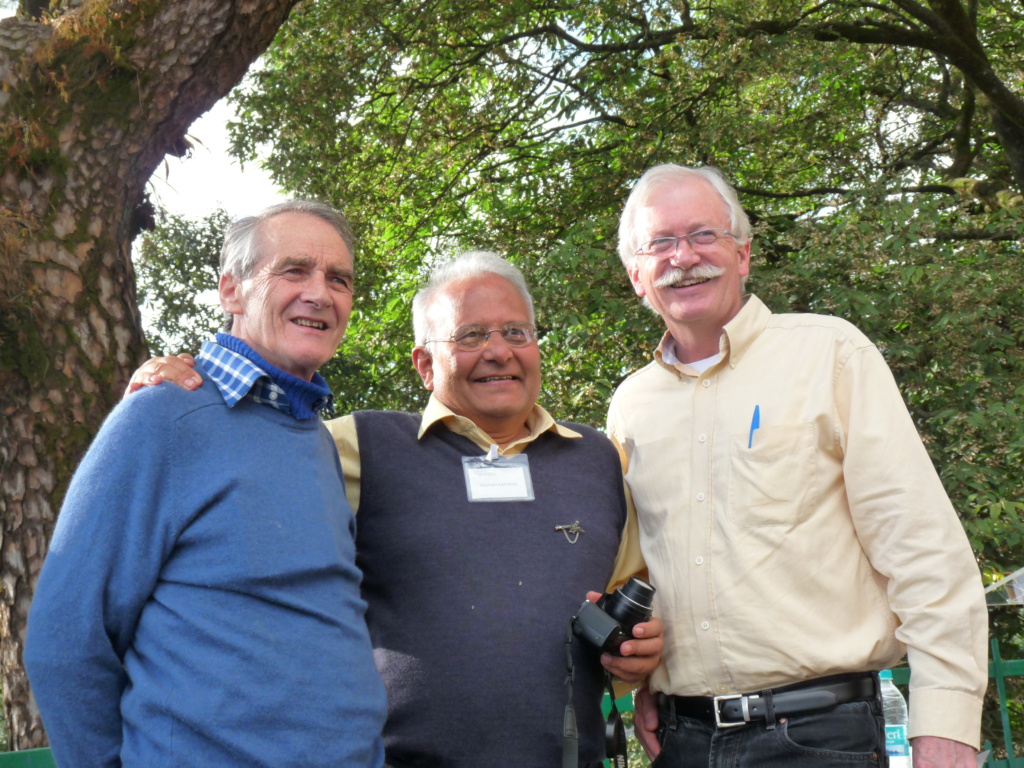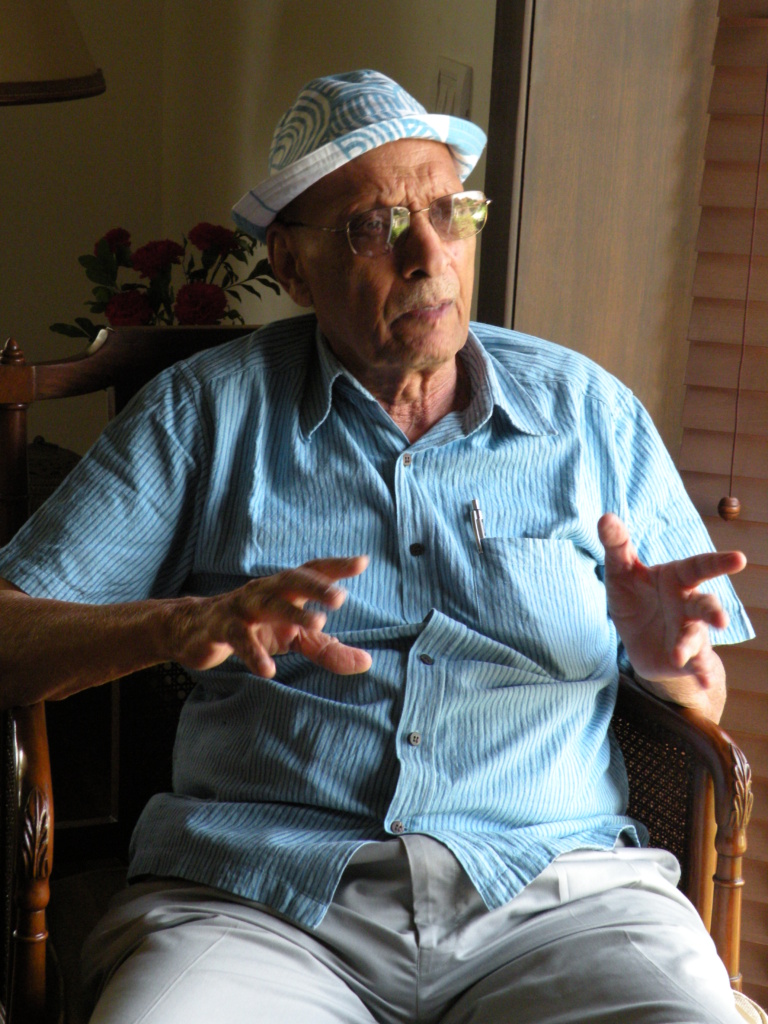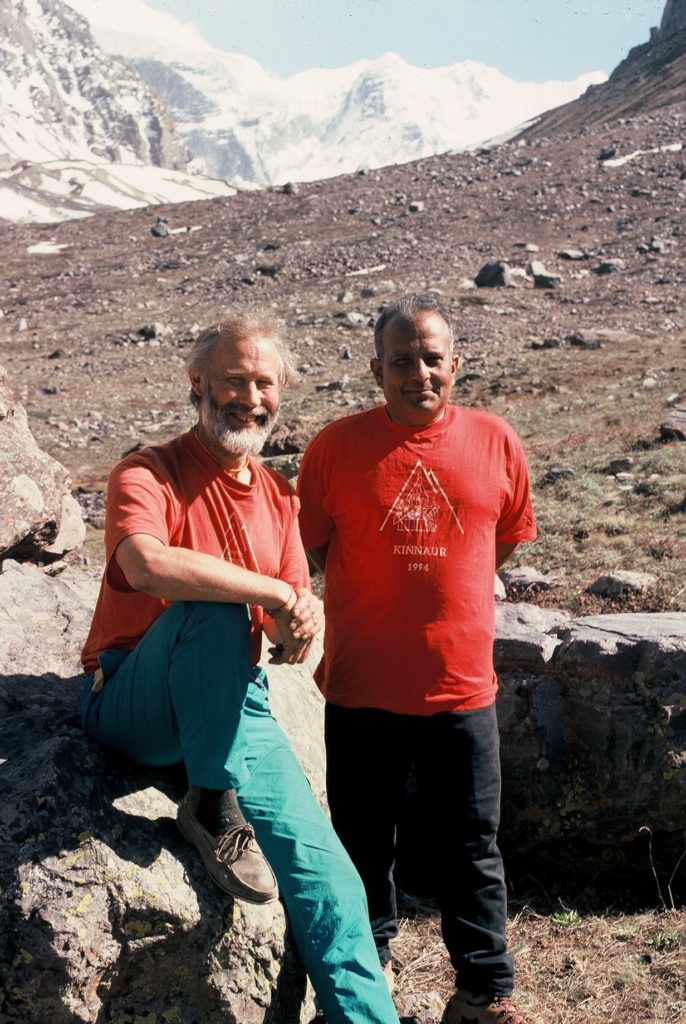Legendary mountaineers and explorer, Harish Kapadia, spent many hours interviewing some of the most renowned personalities from his field. It is now a part of a digital archive.

All photos courtesy: Lt. Nawang Kapadia library
Harish Kapadia, India’s mountain man, plants his flags in digital domain with interviews of climbing legends and explorers
He’s been called The Last Adventurer, and his newest foray is a growing digital archive of exclusive chats with some of the top mountaineers, explorers and researchers from India and abroad
When the film Ishq Ishq Ishq was released in 1974, its director, Dev Anand, decided to invite some rather unusual guests for the premier in Bombay (now Mumbai).
Unusual, of course, in the context of Bollywood, though every bit familiar with the Nepal Himalaya that doubled up as a backdrop for the film. In fact, the movie also boasts of a glorious shot, as Anand is quoted as saying, “…of Mount Everest with a sweetheart of a cloud spinning around it, a very rare sight indeed!”
Those two guests were all too familiar with the world of the high mountains. One of them was Noel Odell, the last man to see his British teammates, George Mallory and Sandy Irvine, before they disappeared on Everest in 1924. Closer to home, Odell had been the first mountaineer alongside Bill Tilman to have climbed Nanda Devi in the Garhwal Himalaya in 1936. The other was Heinrich Harrer, an Austrian mountaineer who made the first ascent of the notorious North Face of the Eiger and is the protagonist of the film, “Seven Years in Tibet”.
There was just one catch – outside of the world of mountaineering, there were few who knew Odell and Harrer. On arrival, they were entrusted to Harish Kapadia, a legendary climber and explorer in his own right, and for the next two days, he took them around the city.
Today, what Kapadia is left with are just memories of the time that he spent with the two climbing legends.
“The crowd that had gathered for the movie premiere outside Metro Cinema was so big that there was no way we could find our way in. I had to tell one policeman that the two gentlemen with me were chief guests and that the movie wouldn’t start without them. He then paved a way for us through all those people – according to Odell, it was like Moses parting the sea in the Bible! That’s how we got to our seats,” Kapadia recalls, chuckling.

Kapadia is a goldmine of stories such as these. But none of them had been documented until 2007 when he started conducting and recording extensive interviews with some of the top mountaineers, explorers and researchers from India and around the world. That digital archive has grown to around 65 guests today.
“Oral history is a well-known concept around the world. The British too had recorded with some of the old masters back in the day that are today housed in the National Archives of India. However, there was no such project that I could locate when it came to mountaineering,” he says.
“Over all these years, I’ve had the opportunity to meet a number of mountaineers. Some like Chris Bonington know me well and would even stay at my house on their visit to Mumbai. So I decided to start recording with them,” Kapadia says.

in the Indian Himalaya.
One of his earliest guests was Dr Charles Houston, an American mountaineer best known for two classic attempts on K2 in 1938 and 1953, in addition to a host of other climbs and exploratory expeditions around the world. Besides his time on the mountains, he also talks about his days with the Peace Corps that brought him to Delhi in the 60s.
A lot of Kapadia’s interviews are with British climbers. Veterans like Tony Streather relieve their days as part of the British Army under the Raj and his climb up Kangchenjunga as part of a team that made the first ascent in 1955. Besides recalling his many ascents around the world, Bonington expresses his feelings about all the friends that he’s lost to the mountains. And active climbers like Stephen Venables and Leo Holding share their thoughts on the future of climbing and the projects that fascinate them today.
Kapadia also approached family members of climbers who have passed away. On a trip to England, he interviewed Susan Band, wife of George Band, the first climber atop Kangchenjunga alongside Joe Brown in 1955. Another time, he spoke to Tony Smythe of the memories he has of his famous father, the legendary English mountaineer, Frank Smythe.
“So many of the climbers I have interviewed are now dead – some like Houston and Doug Scott due to age, while others such as Martin Moran passed away on the mountain, a few years after we spoke. In fact, Martin’s family was happy to receive the recording, since it was his last extensive interview before the accident. So the documentation has been important for other reasons as well,” Kapadia says.
The archive also has a lot of interviews with veteran Indian climbers who have chosen to stay away from the limelight but opened up to Kapadia due to their friendship. Gurdial Singh, who belongs to the first generation of Indian mountaineers, talks about his many climbs in the Indian Himalaya during his days at the Doon School in Dehradun. Another legend of Indian climbing, Dorjee Lhatoo rolls back the years during their conversation – how he moved to Darjeeling from Tibet, joined the Indian Army and was selected by Tenzing Norgay for his first climb, which eventually led him to other challenging mountains such as Everest, Nanda Devi and Chomolhari.
“That interview with Lhatoo was perhaps the one I enjoyed the most. He’s a shy person but one of the most underrated mountaineers for what he’s climbed,” Kapadia says.
“We recorded at his home in Darjeeling over five days. It was a very cozy setting, so comfortable that on one occasion, I dozed off while he continued talking,” he adds, laughing.
Besides climbers, Kapadia has also spoken to chroniclers of mountaineering such as author Bernadette McDonald, H Adams Carter and Lindsay Griffin, who have served as editors of the American Alpine Journal, and Jagdish C Nanavati, former president of the Himalayan Club. Then, there are conversations with former presidents of the Indian Mountaineering Foundation (IMF) such as MS Gill and Col Ashok Abbey as well.
“Gill was a very humble man. I recall him telling me that the only thing he knew about climbing when he took over the IMF was the fact that he knew not much about climbing. So his first assignment was to get on board two deputies who were well aware of the subject,” he says.
Then, on a visit to Geneva, Kapadia could spend many hours recording with Aamir Ali, a cousin of renowned ornithologist, Salim Ali, and a former schoolmaster at the Doon School, who moved on to work with the International Labour Organisation (ILO). While he did a fair bit of climbing and ski touring in the Alps, a lot of his early adventures took place in the big mountains of India.
“On a trip to the East Karakoram in Ladakh with Gurdial Singh in 1979, they spotted a lama on the road and offered him a ride in their car. They expected him to be a calm, reserved monk, but this man spoke non-stop for the next six hours. Aamir Ali remembered him as the monk who had obviously taken no vow of silence,” Kapadia says, laughing.
Then, Ali talks about life at ILO and his proposal to establish the Siachen Peace Park to bring an end to the hostilities between India and Pakistan on the highest battlefield in the world.<
“I still remember a few lines from that interview. He said, why should we not have peace, just because we don’t kneel at the same altar? Why should I not be his friend, just because he doesn’t believe in my god,” Kapadia recalls.
Kapadia has also documented parts of his own journey – a job he hopes to finish in the near future. It is replete with accounts of his explorations in various mountain ranges across India, a valuable asset for any climber in the future alongside the various books that he’s written so far. He also talks about his accident on Devtoli in 1974 that left him with a broken hip, far away from civilisation. The heavy sedatives that he was administered to alleviate the pain played tricks on his mind.
“I was piggybacked by the locals for a certain distance. After that, it was an endless wait for the helicopter to arrive, even as most of the team departed on foot. When the stove was being used nearby or if the tent fluttered due to the wind, I would look up in the sky, thinking it was the helicopter arriving. Finally, I was airlifted to a hospital in Bareilly and relieved of my misery,” Kapadia recalls.
He is aware of the goldmine that he’s sitting on, but is unsure of what he would like to do with it for now. But he hopes his documentation can aid mountaineering history in the time ahead.
“The funny thing is that when I hear these interviews today, my mind rushes back to all those people that I’ve missed talking to,” he says.
And topping that list would certainly be the two gentlemen, Harrer and Odell, whom Kapadia had the good fortune of meeting back in the day.